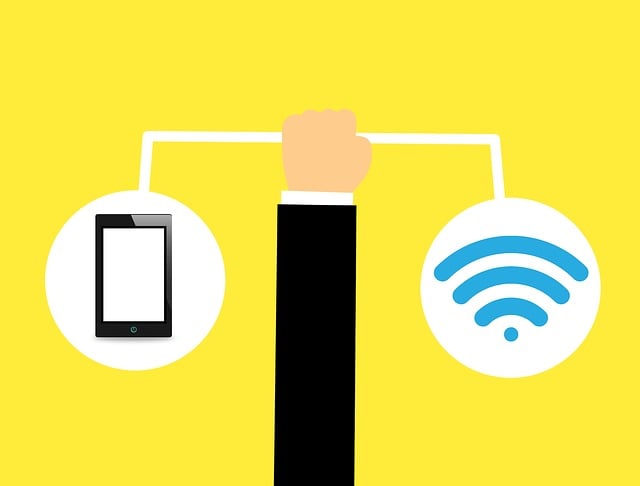Smart building technology, powered by IoT devices and wireless access cabling, is transforming our built environment. Wireless cabling enables flexible and cost-efficient installation, facilitates upgrades, and ensures secure network infrastructure for modern smart buildings. It allows seamless integration of lighting, temperature control, security, and access management systems, enhancing energy efficiency, occupant comfort, and security. While retrofitting existing spaces presents challenges, robust wireless networks and interoperability are crucial for effective communication between IoT devices. Looking ahead, wireless access cabling is expected to be the primary connection method in smart buildings, offering reduced costs and flexibility; however, addressing data management, privacy, cybersecurity, and device interoperability will be essential to ensure secure and reliable operations.
Smart building technology is transforming the way we interact with our built environment, offering enhanced comfort, efficiency, and security. Integration with Internet of Things (IoT) devices creates a harmonious space where automation thrives. This article explores the fusion of smart building tech and IoT, focusing on the pivotal role of wireless access cabling in facilitating seamless connectivity. We delve into benefits, essential considerations, and future trends, painting a picture of the ever-evolving smart building landscape. Discover how wireless access cabling empowers efficient data transfer and enhances the overall experience.
Understanding Smart Building Technology and IoT Integration
Smart building technology and Internet of Things (IoT) devices are transforming the way we interact with and manage our built environment. At its core, smart building integration involves connecting various systems within a structure—from lighting and temperature control to security and access management—to create a unified, automated network. This interconnectedness enables efficient energy management, enhanced occupant comfort, and improved security.
The foundation of this integration often lies in wireless access cabling, which facilitates the seamless transmission of data between IoT devices and central control systems. By replacing traditional wired solutions, wireless technology offers greater flexibility, reduced installation costs, and easier upgrades. This allows buildings to evolve with changing technology needs while ensuring a robust and secure network infrastructure.
Benefits of Wireless Access Cabling in Smart Buildings
Wireless access cabling is transforming smart buildings into fully connected environments, offering numerous advantages over traditional wired solutions. By eliminating the need for physical cables, it provides a flexible and efficient infrastructure for managing an array of Internet of Things (IoT) devices. This technology enables seamless integration of various sensors, actuators, and communication modules, fostering a more dynamic and responsive built environment.
The benefits are multifaceted: it streamlines installation processes, reduces construction costs, and minimizes the complexity of future upgrades or reconfigurations. Wireless access cabling also enhances accessibility and convenience, eliminating trip hazards and making building maintenance easier. Moreover, its inherent security features ensure data integrity and privacy, addressing a critical concern in IoT deployments.
Key Considerations for Seamless Integration
When integrating smart building technology and IoT devices, several key considerations are essential for seamless connectivity and optimal performance. One of the fundamental aspects is wireless access cabling. Traditional wired solutions may not be feasible in all spaces, especially in retrofitting existing buildings. Therefore, implementing robust and reliable wireless networks is crucial to enable seamless communication between various IoT sensors, actuators, and gateways. This involves careful planning to ensure sufficient bandwidth, low latency, and secure connections across the entire facility.
Additionally, interoperability is another critical factor. Different smart building systems and IoT devices may use diverse protocols and standards, making them challenging to integrate seamlessly. Ensuring that all components can communicate with each other without compatibility issues is vital for effective automation and control. Standardization and open protocols can facilitate this process, allowing for easier configuration, management, and future expansion of the integrated system.
Future Trends and Challenges in Smart Building Connectivity
The future of smart buildings promises seamless integration and enhanced connectivity, with an increasing number of IoT devices playing a pivotal role in shaping this evolution. As technology advances, we can expect to see more buildings adopting wireless access cabling as the primary means of connecting various sensors, actuators, and devices. This shift towards wireless technology offers numerous advantages, such as reduced installation costs, easier reconfiguration, and enhanced flexibility in accommodating new devices and systems.
However, challenges remain in ensuring secure and reliable connectivity across a complex web of smart building components. Managing the vast amount of data generated by IoT devices and ensuring privacy and cybersecurity will be paramount. Additionally, maintaining interoperability between different device manufacturers and standards will be crucial to prevent future compatibility issues. As buildings become more intelligent, addressing these challenges will be essential to unlock the full potential of smart building technology.
The integration of smart building technology and IoT devices through efficient wireless access cabling offers a promising future for enhanced connectivity, energy efficiency, and improved occupier experiences. As we look ahead, addressing challenges such as standardization and cybersecurity will be crucial to unlocking the full potential of this innovative approach. By prioritizing seamless integration and adopting best practices, buildings can evolve into truly intelligent environments that adapt to the needs of their occupants and contribute to a more sustainable future.
